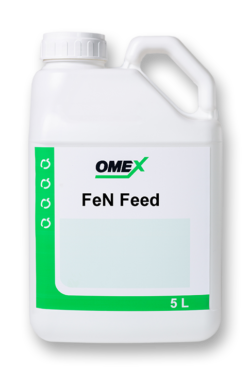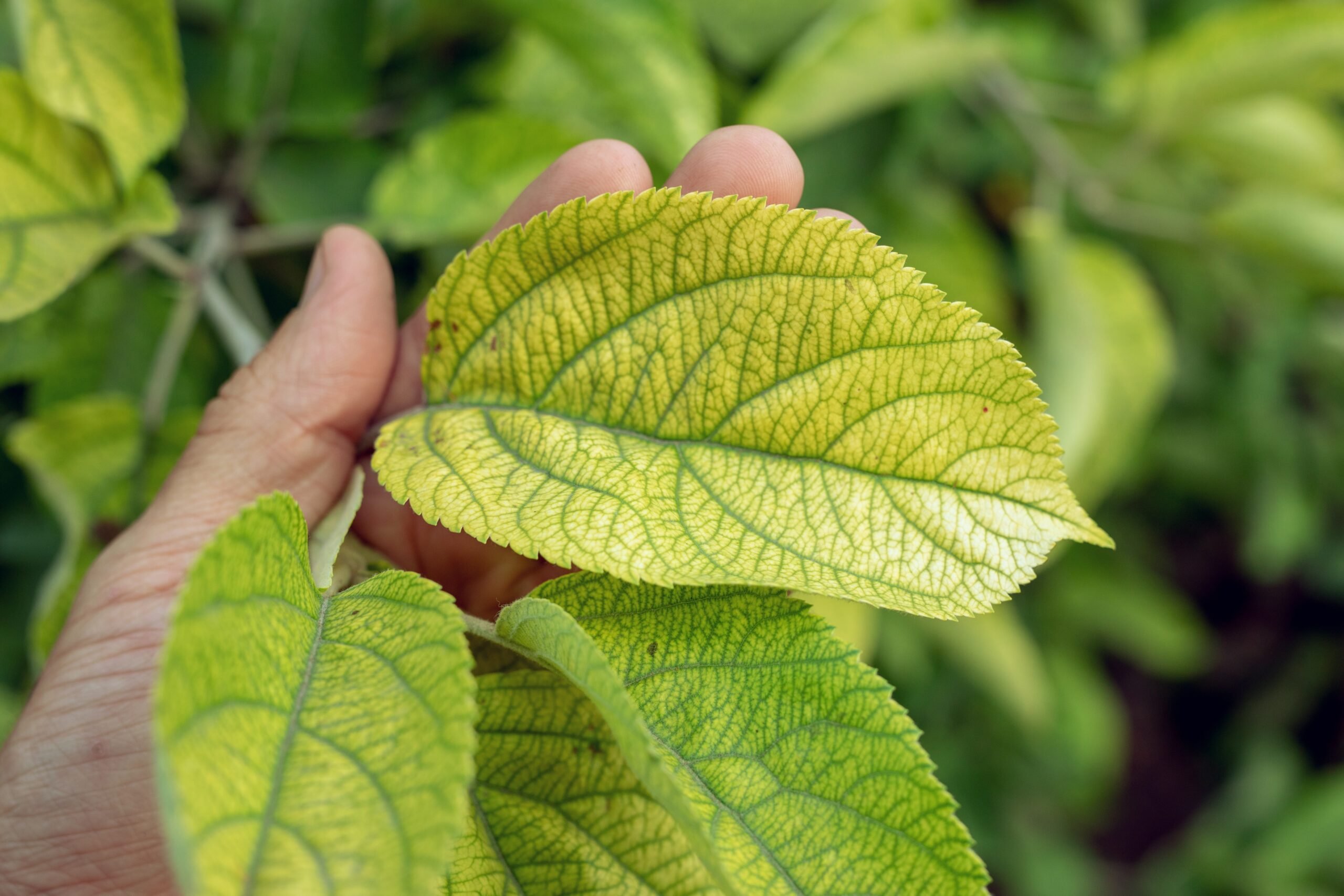
Iron plays an important role in respiratory and photosynthetic reactions. Iron deficiency occurs especially in calcareous, alkaline soils (pH higher than 8.0). Iron deficiency will produce distinctive yellow stripes on leaves of small grains with younger leaves and tissues showing symptoms early. Fruit crops (apples, pears, grapes) will exhibit chlorotic interveinal tissues with major and minor veins remaining green.
Form – taken up as ionic Fe2+ and Fe3+, Iron is central to photosynthesis and the primary Carbon capture pathway.
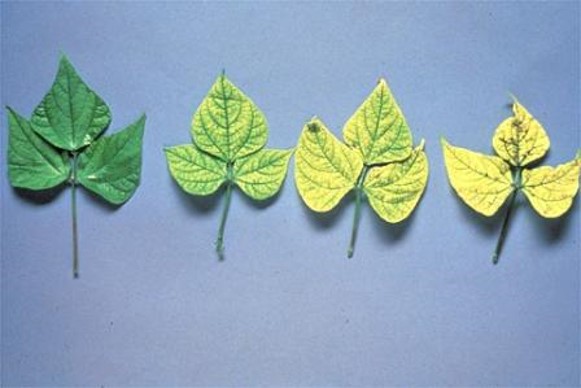 Function – as part of both cytochrome and chlorophyll, Iron promotes green leaf area, cell activity and photosynthetic rate. This has a direct impact of growth rate and the movement of soluble sugars around the plant. In addition, Iron plays a vital role in plant defence and enzyme activation. Iron-rich materials are released through the root system to stimulate beneficial plant microbes and reduce pathogen activity. As a result, low Iron status results in reduced tolerance to stress and infection.
Function – as part of both cytochrome and chlorophyll, Iron promotes green leaf area, cell activity and photosynthetic rate. This has a direct impact of growth rate and the movement of soluble sugars around the plant. In addition, Iron plays a vital role in plant defence and enzyme activation. Iron-rich materials are released through the root system to stimulate beneficial plant microbes and reduce pathogen activity. As a result, low Iron status results in reduced tolerance to stress and infection.
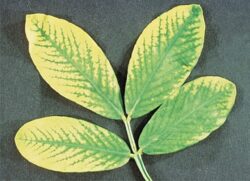 Symptoms – low Iron status affects younger leaves and active growing points. Similar in appearance to Magnesium stress, but affecting new leaves. Tissue becomes severely chlorotic, displaying a uniform inter-veinal yellowing.
Symptoms – low Iron status affects younger leaves and active growing points. Similar in appearance to Magnesium stress, but affecting new leaves. Tissue becomes severely chlorotic, displaying a uniform inter-veinal yellowing.
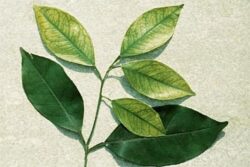 Significance – Iron stress restricts the conversion of sunlight to plant energy, resulting in slow growth rates, poor development and low tolerance to both biotic and abiotic stress. Low Iron status is often associated with alkaline soils and cold, wet growing conditions.
Significance – Iron stress restricts the conversion of sunlight to plant energy, resulting in slow growth rates, poor development and low tolerance to both biotic and abiotic stress. Low Iron status is often associated with alkaline soils and cold, wet growing conditions.
Actions – check soil status and root development for compaction. Apply foliar treatments during the early stages of plant development and times of stress.
To prevents and correct iron deficiency, why not try OMEX FeN Feed

